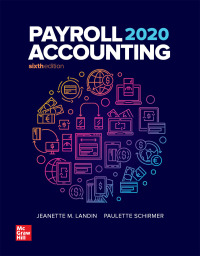List the major categories of accounts that appear on the income statement, and describe a typical heading for this statement: Select one: O The Income Statement includes revenues, expenses and net income and the heading always represent a distinct period of time, usually either a month, a quarter or a year. O The Income Statement includes assets, liabilities and owner's equity and is prepared as of a particular date The Balance Sheet indudes revenues, expenses and net income and the heading reveals that it is prepared as of a particular date The Balance Sheet includes assets, liabilities and owner's equity and the heading reveals that it is prepared as of a particular date. Cargo Transport earned revenue on account. The earning of revenue on account is recorded by a Select one: O Debit to Accounts Receivable and a credit to Revenue. O Debit to Accounts Payable and a credit to Revenue. O Debit to Revenue and a credit to Accounts Receivable. O Debit to Cash and a credit to Revenue. The purpose of a Trial Balance is to: Select one: O Ensure that all transactions have been recorded O Speed the collection of cash receipts from customers O List all accounts with their balances O Increase assets and owner's equity The account credited for a receipt of cash on account Select one: O Cash O Service Revenue O Accounts Payable O Accounts Receivable Cost of goods sold: Select one: O is another term for sales. O s also called gross margin. O Are operating expenses. O is the term used for the cost of buying and preparing merchandise. Sales returns and allowances: (choose all that apply Select one or more: O Are included in published statements O Provide information about dissatisfied customers and the possibility of lost future sales. O Are recorded in separate contra-revenue accounts. Provide information about the possibility of lost future sales. The adjusting entry to accrue salary expense: Select one: O Debits Salary Expense and credits Salary Payable O Debits Salaries Payable and credits Salary Expense O Debits Salaries Payable and credits Cash O Debits Salary Expense and credits Cash Adjusting entries: (Choose all that apply) Select one or more: O Are typically made half-way through an accounting period. O Bring asset and liability accounts to correct balances. Assign revenues in the period to which they are earned. O Help to properly measure the period's net income or net loss. The major expense of a merchandising business is: Select one: O Rent O Amortization O Interest O Cost of good sold The perpetual and periodic inventory systems will produce identical cost of goods sold and ending inventory balances using which of the following cost flow assumptions? Select one: Weighted average Average First-in, First-out (FIFO) Just in time Suppose Alpine Sportswear suffered a fire loss and needs to estimate the cost of the goods destroyed. Beginning inventory was $110.000, net purchases totaled $660,000, and sales came to $1,100,000. Alpine's normal gross margin percentage is 51%. Use the gross margin method to estimate the cost of the inventory lost in the fire Select one: O $539,000 O $231,000 O $561,000 O $770,000 A perpetual inventory system is able to directly measure shrinkage Select one: O True O False The Merchandise Inventory account balance at the end of one period is the amount of beginning inventory in the next period, Select one True False Inventory is a current liability on the balance sheet. Select one: O True O False Each sales transaction for sellers using a perpetual system involves recognizing revenue and cost of goods solo Select one: O True O False Cost of goods sold is also called cost of sales. Select one: O True O False






















